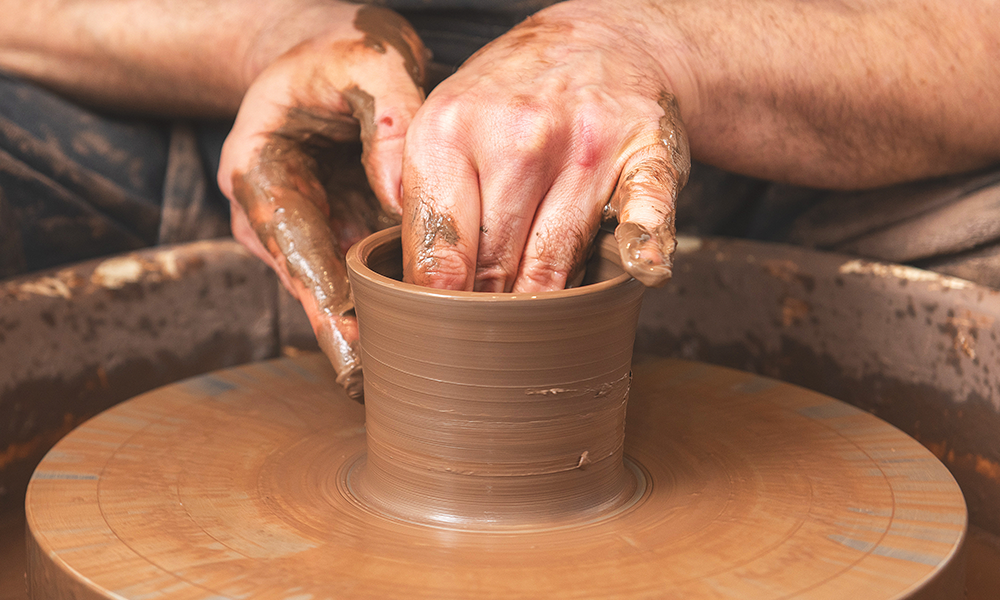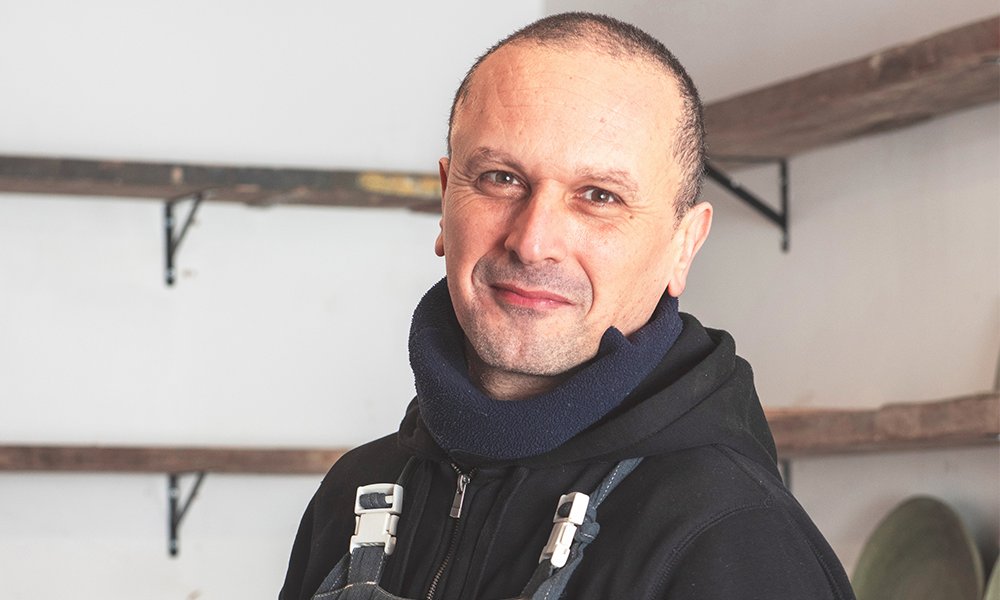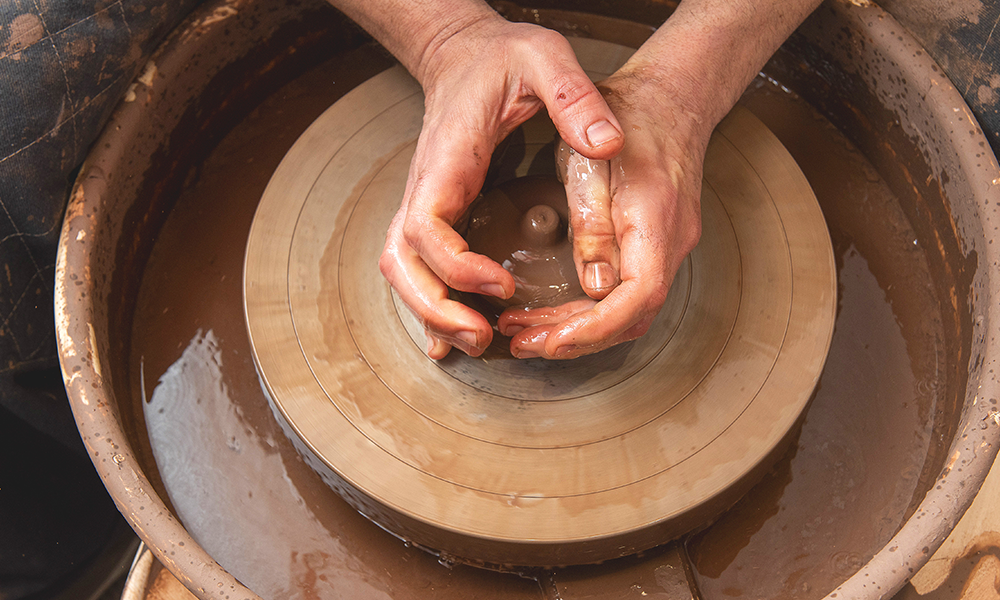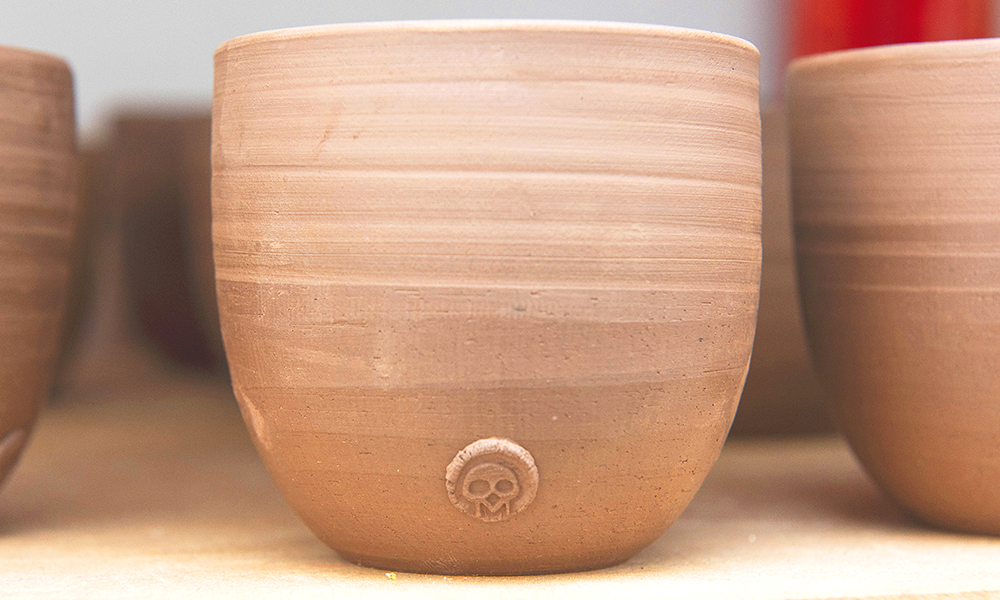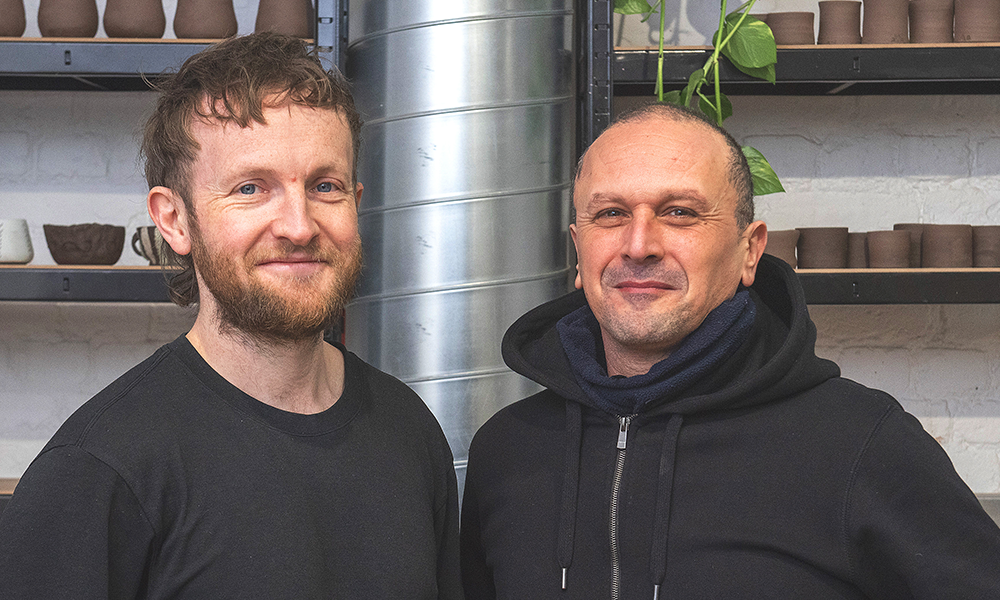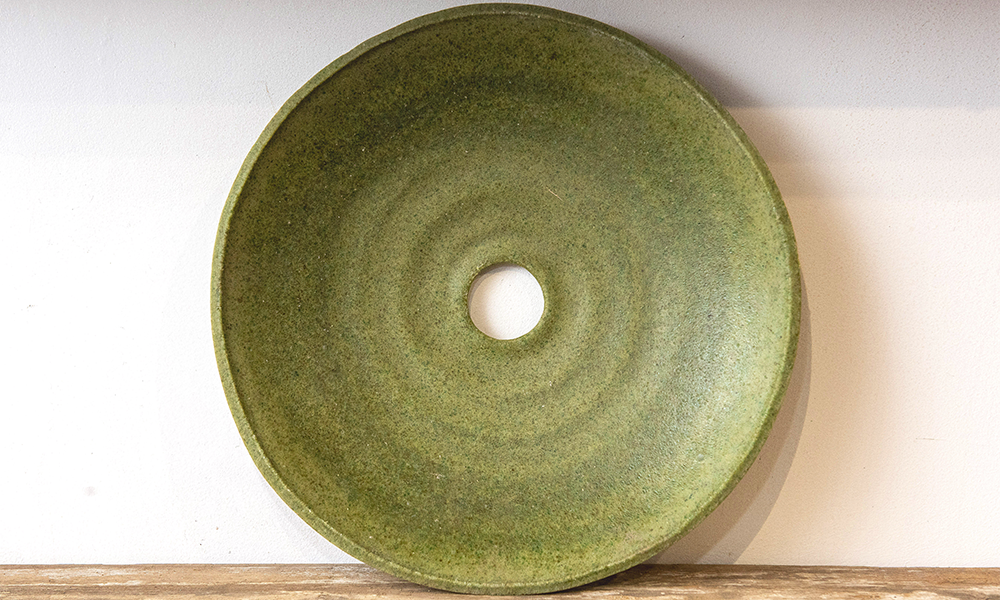Manos Kalamenios hosts taster and workshop sessions at his Design District studio space
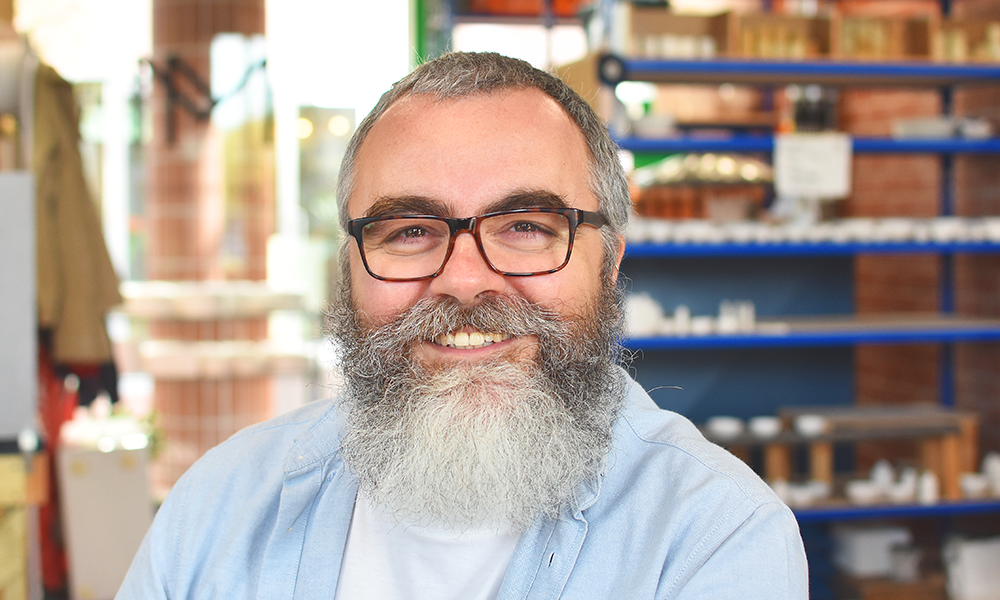
Subscribe to Wharf Life’s weekly newsletter here
The world of ceramicist, alchemist and experimental creator Manos Kalamenios is filled with impossible things.
I was going to use the word littered, but thanks to a relentless focus on sustainability, there’s practically no rubbish in his bin.
His sink even has a filter that allows him to recover particles of clay for recycling in future projects.
And what projects they are. Made By Manos, his ground floor studio space at Design District on Greenwich Peninsula, is filled with finished pieces.
Its shelves are strewn with exotic vessels in bone china, porcelain and earthenware – pieces that light up and even ones made from ceramic foam, shaped and then solidified to give the appearance of a fossilised sponge.
There are improbably thin pieces, delicate as paper, and shards of material that seem perfectly solid until light shines through their translucent forms, radically altering their appearance.
When I arrive, the table is filled with ghostly white Christmas baubles which are just being removed from their moulds.
Everywhere there are trial pieces, innovation and work – either Manos’ own creations or those of his students. It’s much more than just a showroom.
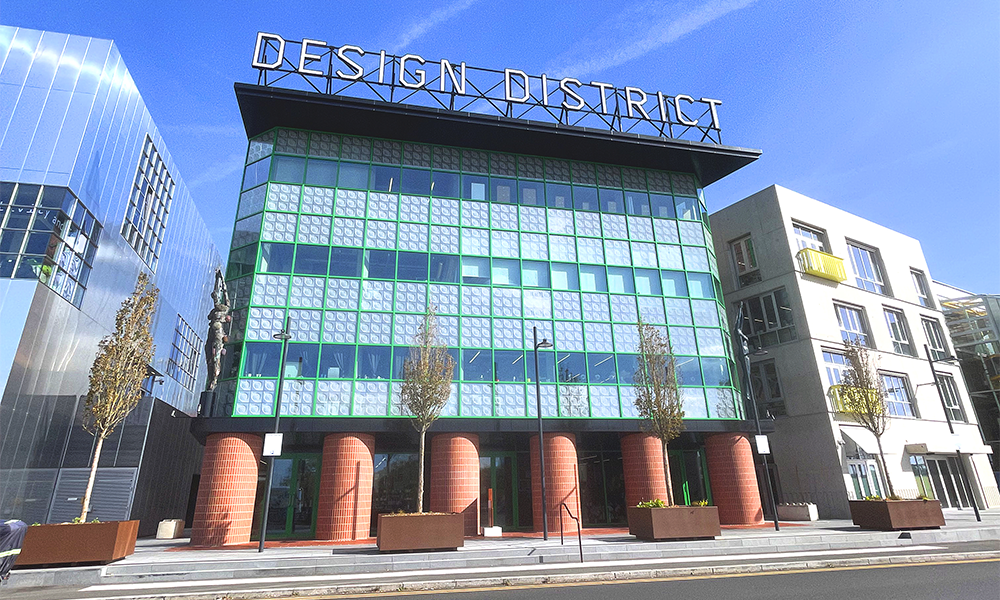
“Experimentation is paramount for me because it keeps me sane,” he said.
“It would drive me mad if I had to do the same thing for the rest of my life, so that’s why everything is different.
“Of course, if someone really likes something then I will make another one and I’m always happy to try new colours or textures. I never say no to anything.”
A Greek who grew up in Athens, Manos originally came to the UK in pursuit of his dream to become a chef at a Four Seasons hotel.
Working first in Greece, then Spain, he achieved his aim, cooking at the brand’s Canary Wharf hotel from 2003 to 2005.
But the long hours took their toll and he left hospitality, initially to live with friends in the Isle Of Man.
With the intention of pursuing a career as an artist (having never touched clay) he enrolled on a foundation course where he first encountered ceramics and a new passion.
Further study led to a degree in fine art and then an MA in ceramics and glass at the Royal College Of Art as well as the chance to collaborate with an old friend.
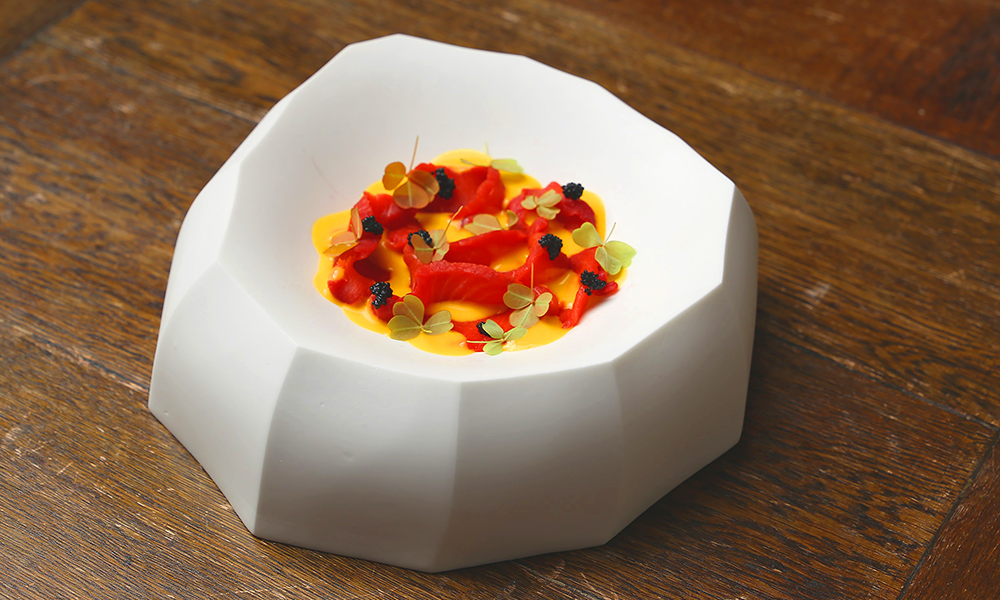
“When doing my MA, I met up with a man I used to work with at the Four Seasons in Canary Wharf – Robert Ortiz – who had become head chef at Michelin-starred restaurant Lima, in Fitzrovia,” said Manos
“We decided to do this collaboration with the restaurant’s menu on my tableware and it was magical.
“When I was a chef I was always excited by using unusual plates, so it’s nice to see pieces designed for food and not the other way around.”
Having worked out of a studio locally, Manos saw a sign on the door of Design District – Knight Dragon’s project to fill a plot with workspaces created by numerous architects – and applied for a studio.
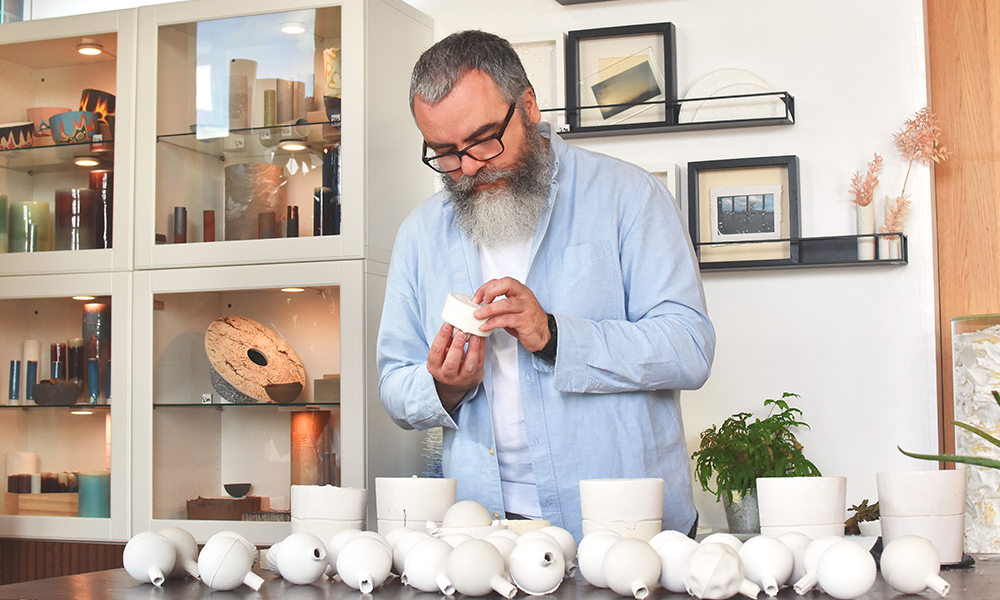
“In the past, I was making work for myself, for clients and commissions,” he said.
“But when I moved here, I found the potential was not just for me.
“My aim would be to see this place buzzing – I have the space to offer workshops, to teach and to help people with their projects.
“My tag line for Made By Manos is: ‘If you can’t find it, come and make it’.
“I want people who live or work locally to come because using clay is so nice, so relaxing – you can just get away from stress.
“It’s great to have something you’ve made or to give it as a gift – I want people to come here and to feel happy at that feeling of achievement.
“You can be a complete beginner, someone who has never touched the material before, and then leave with something you have made.
“For me, it’s amazing to pass something on and to give back to the community.
“This isn’t that old mentality of not sharing a secret glaze or something.
“I think you can only make progress by sharing what you know.”
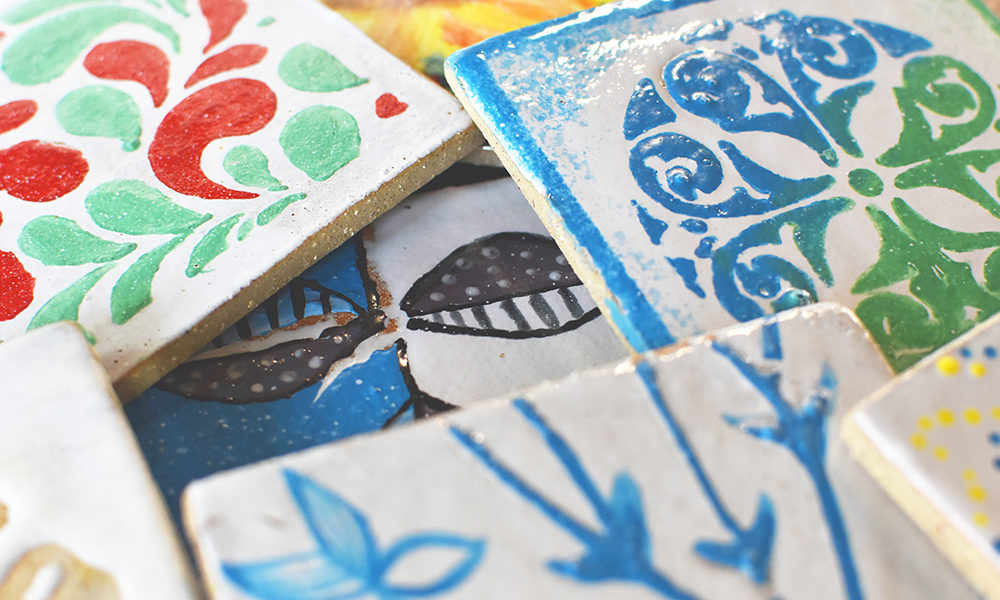
Manos is constantly developing his own practice, blending ingredients in different ways to create new materials and approaches.
His pieces have been widely exhibited and used, including pieces for Canary Wharf’s Winter Lights Festival in 2018, tableware for Tate Modern’s members club and work for Four Seasons Hotels And Resorts in Athens.
“About 99% of my work is slip casting, so I don’t have the mess with a wheel spraying the clay everywhere,” he said.
“I also find the wheel very restricting because everything you make has to be round.
“With slip, I have the ability to get any shape I want, any size, any height and any finish.
“I love lighting and working on a big scale – I also like collaborating, doing things outside my comfort zone with glass, jewellery and metal.
“My favourite is probably working with bone china – I’ve even found a way to make it into a foam by adding extra air.
“As a student I was taught air was imperfection and my instinct is always to go completely the other way. That’s the most exciting thing to do.
“When I was making the foam, I was told I was looking for trouble but once you know the limits you can adapt it to what you want.
“I was also told never to add glass and I wound up making pieces for James Dyson after doing that, so I think you should listen to your gut and go with it.”
For those who want to have a go themselves, Manos offers one-hour taster sessions at his studio for £30 per person, where small groups learn ancient techniques to hand-build vessels in stoneware clay.
He also offers three-hour themed workshops for £80, where participants in groups of five work on specific projects such as building mugs or cups or making Christmas decorations such as paper porcelain baubles for the tree.
One-to-one coaching and mentoring are also available on an hourly basis as well as a firing service for people who have made pieces but lack a kiln to finish them.
Read more: How inhaling nitrous oxide can damage your spine
Read Wharf Life’s e-edition here
Subscribe to Wharf Life’s weekly newsletter here
- Jon Massey is co-founder and editorial director of Wharf Life and writes about a wide range of subjects in Canary Wharf, Docklands and east London - contact via jon.massey@wharf-life.com




